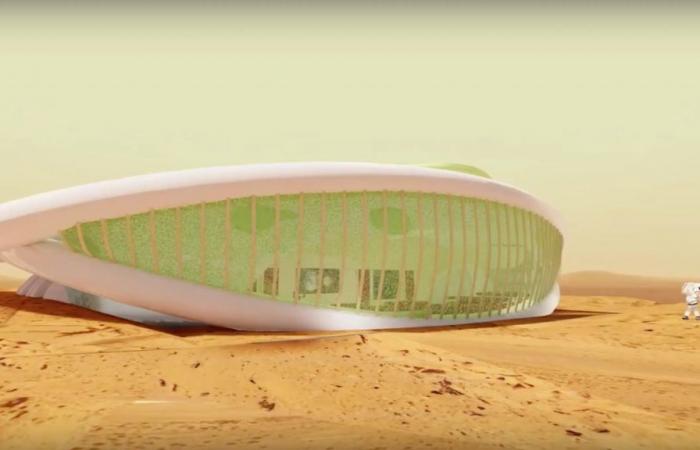Mycotecture. This is the name given to an innovative construction technique that uses myceliumthe vegetative part of mushrooms, as the basic material. This process involves growing networks of mycelium in molds, where they solidify to form lightweight, insulating and biodegradable structures. It is ecological and sustainable, and it is even considered an alternative to traditional construction materials such as concrete or plastic, which are obviously very polluting. Better yet, it’s even biodegradable.
Born in 2009, mycotecture is now of interest to NASA, and the idea would be to use this technology to manufacture structures on the Moon. Obviously in the shape of… mushrooms! “We can’t take boards or bricks”, reminds Chris Maurerfounder of Redhouse, a Cleveland-based architecture firm that partnered with NASA to solve this alien construction problem. « So, what are we going to build with? And it is really expensive to take already built habitats. »
More resistant and solid than concrete (on the Moon)
Engineers have therefore identified the resources present on the Moon, and we therefore find water and regolith (lunar dust). This is enough to feed certain species of fungi, which can then be converted into building materials with higher strength and solidity than concrete! NASA is talking about billions of dollars in savings if the process works on the Moon.
« Strength doesn’t really matter on the Moon or Mars, because gravity is much less and the building forces are going to be directed outward, because you’re in a pressure vessel »explains Maurer. « Instead of gravity putting pressure on your building, air pushes outwards. It is therefore not necessary to use a material resistant to compression, but rather to traction to withstand this pressure. »
Mushrooms already used on Earth
The project is so serious that it obtained a phase III contract with NASA. Which means the space agency will release funds for the development of this project called Mycotecture Off Planet Structures at Destination. On Earth, the Redhouse company has proven itself in Namibia, with a program that uses “mycomaterial” to build housing for climate refugees while growing edible mushrooms to address food shortage issues.
To “feed” and grow the mushrooms, engineers simply use organic matter like plants or construction waste. The resulting material is then heated and compacted into blocks that are stronger than concrete and exponentially better for the environment.
90% of materials are already on the Moon
For this Moon project, the idea is to start with an inflatable mold in which the mycomaterial is grown using a combination of fungal spores and algae from Earth, which will feed on the water and regolith already present on the Moon.
« This way we can use some living biology and nutrients », concludes Maurer« and then we can add a lot of water once we get there from the underground ice. This represents approximately 90% of the mass of the final building, so most of its materials were recovered at their destination.. »






